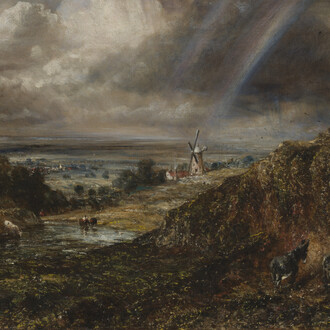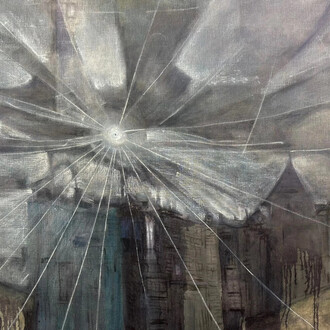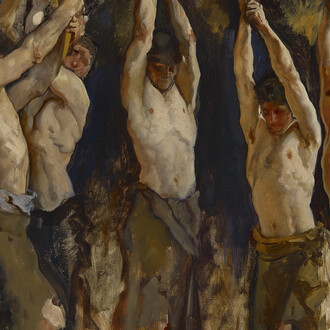You’ve just heard ‘Bittersweet Symphony’ for the first time. No warning. You just came for a visit to say hello. Right out of the blue. Right out of the huge speakers that Olympic Studios is famous for. Life defining. You wish you could go back and hear it again for the first time. What a thing with which to be involved. Astonishing
(Chris Floyd)
If you need any pictures of us to work from, get them from [Floyd]. He’s on the road with us, taking our souls away every night with his camera.
(Richard Ashcroft)
It has been two decades since the colossal success of The Verve’s era-defining Urban Hymns, and it remains one of the biggest selling British albums of all time. The Verve book and accompanying exhibition is a fascinating memoir from the photographer Chris Floyd, released to coincide with the twentieth anniversary of the seminal album.
After an initial assignment in 1994, photographer Chris Floyd was embedded with the band in late 1996 and 1997 and documented the recording, touring and promoting of the album in the UK, Ireland and the USA – the only photographer to have such access. This new Reel Art Press edition is the first time his photographs from that time have been published.
Urban Hymns was The Verve’s third album; it was released by HUT Records on 29 September 1997, and featured hits, ‘The Drugs Don’t Work’, ‘Lucky Man’, and ‘Bittersweet Symphony’ – the song that won the band a Grammy Award nomination for Best Rock Song. The Verve won two Brit Awards in 1998, including one for Best British Group, and were twice on the cover of Rolling Stone magazine. The book’s release coincides with the release in September 2017 of new Super Deluxe versions of Urban Hymns on 5CD / DVD and 3 double-vinyl (6LP) box set editions. Both sets contain rare and unreleased recordings.
Chris Floyd toured with the band at the height of their fame following the release of Urban Hymns, documenting their meteoric rise from British indie band to global superstars. In 1994 the band were playing to crowds of hundreds, four years later they sold out a 33,000 gig at Haigh Hall in their hometown of Wigan.
This body of work is a celebration of a band that, momentarily, looked like they were set to become one of the biggest rock and roll bands in the world. As Floyd reflects: “For a while it felt like being at the centre of the universe. . . . We were in a brief golden era, when it looked like the world was unshackling itself and beginning to develop a more advanced and progressive attitude. We seemed to be in a decade that had taken a holiday from history. I am grateful and thankful that I got to live out my twenties in such a fertile, peaceful and creative period.”
The photographs vividly depict this period in time – before the explosion of the internet, smartphones and social media. As journalist Michael Holden, who toured America with the band, says in his foreword: “Those years, it turns out, were the twilight of analogue consciousness and certain seeming certainties about the world at large. Whatever we are now, we were not then. This isn’t just the everyday past we’re looking at, but another planet.” Thoughtfully, Floyd has included in the book a section devoted to people’s nostalgic musings and memories from 1997.
Chris Floyd is a British photographer and filmmaker. His photographic work has appeared in publications including Vogue, Vanity Fair, The New Yorker, Harpers Bazaar, GQ, Esquire, The New York Times Magazine, The Sunday Times Magazine and Wallpaper* among others. He has shot advertising campaigns for Apple, British Airways, Sony and Philips and has been selected several times for the National Portrait Gallery’s Taylor Wessing Portrait Prize and the annual publication, American Photography. Chris’s attention to the subtleties of mood, texture, emotion, light and colour is what binds his aesthetic and attitude into a coherent and unique style. In a career that has spanned over 20 years he believes that the most important aspect of his working method is his ability to establish a level of collaboration and ease with his subject that allows him to engender intimacy and empathy within the frame.
**Reel Art Press R|A|P stands for exceptional style and a unique curatorial eye. It stands for luxury and class, the highest production values, and a sensitivity to an eclectic selection of subject matter and material. It stands for rare, unpublished and unusual work including subjects with mass appeal and limited editions with unlimited potential. The company has made headlines around the world with its previous releases, which include: Disco: The Bill Bernstein Photographs, The 2001 File, Unseen McQueen, Billy Name: The Silver Age and Jim Marshall: Jazz Festival.














